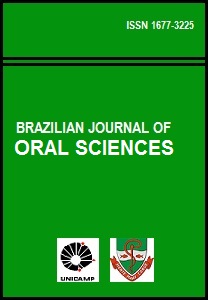Abstract
Aim: The aim of this in vitro study was to compare the reproducibility and accuracy of quantitative light-induced fluorescence (QLF) in relation to other technologies and conventional methods for detecting occlusal carious lesions. Methods: Ninety-six extracted permanent molar teeth were selected. Three examiners carried out examinations using Visual examination (VI), bitewing radiographs (RX), QLF, electrical conductance measurement (ECM), and DIAGNOdent. Twentyfive percent of the teeth were re-examined for repeatability. Stereomicroscopic examination was used as the gold standard. Results: Intra- and inter-examiner agreement ranged from 0.43 to 0.89. Areas under ROC curves were 0.82, 0.54, 0.84, 0.79 and 0.88, respectively, for VI, RX, QLF, ECM and DIAGNOdent examinations, with RX significantly lower than the other methods. No significant statistical difference was found when comparing the areas under ROC curve of visual inspection and QLF. Conclusions: Although QLF and other technologies for early caries detection may offer some advantages, this study did not find significant improvement in occlusal caries detection when compared to visual examination.The Brazilian Journal of Oral Sciences uses the Creative Commons license (CC), thus preserving the integrity of the articles in an open access environment.
Downloads
Download data is not yet available.

